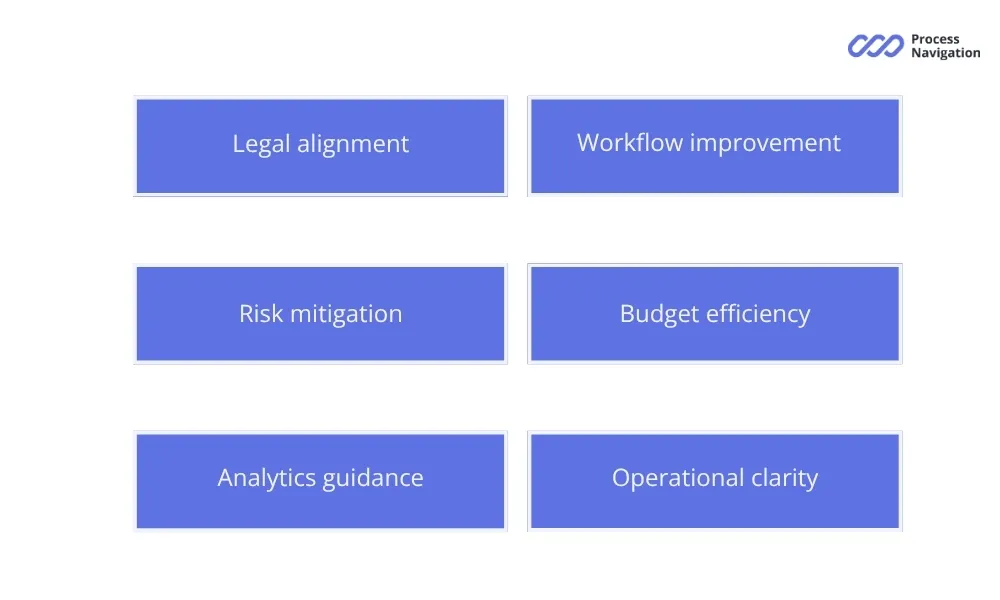In today’s world of regulations and competition, product quality and compliance is not just an operational goal — it’s a strategic necessity. CAPA management software is the backbone of any modern quality management system, allowing organizations to identify, investigate and prevent recurring quality issues.
A properly implemented CAPA program not only helps companies comply with regulations but also creates a culture of continuous improvement where every deviation is an opportunity for growth.
What is CAPA Software?
CAPA (Corrective Action and Preventive Action) is specialized software for managing corrective and preventive actions. It helps companies systematically identify, analyze, and eliminate quality issues, ensuring regulatory compliance and improving process efficiency. This is the basis of modern quality management systems.
Whether you’re in pharmaceuticals, automotive, electronics, food manufacturing, or aerospace, a robust CAPA management software helps ensure your operations meet internal standards and external regulatory requirements.
A robust CAPA management platform ensures alignment with internal SOPs and external regulatory standards such as the FDA’s 21 CFR Part 820 and EU GMP Annex 11, while supporting compliance management initiatives across regulated industries.
Technological Capabilities of CAPA Software
A modern CAPA management system is an integrated platform that combines all aspects of quality management into a single ecosystem. This system becomes the nerve center of the entire quality management system, coordinating the work of various departments and processes.
The modern CAPA program relies on cutting-edge technologies that ensure maximum quality management efficiency. Corrective action tracking software integrates a variety of innovative solutions.
Most CAPA management software includes:
- Issue Logging: Capture deviations, audit findings or safety incidents.
- Root Cause Analysis: Use 5 Whys, Fishbone (Ishikawa) Diagrams and Pareto charts to analyze data effectively.
- Corrective Action Planning: Assign tasks, due dates and owners with escalation paths.
- Preventive Action CAPA Development: Identify systemic improvements and monitor long term impact.
- Verification & Validation: Ensure actions are effective and prevent recurrence.
- Documentation & Traceability: Store records for internal use, maintain compliance, and prepare for audit management.
- Automation & Integration: Link to document control, training management, and supplier management modules.
Advanced corrective action software often includes analytics, AI-based suggestions, and mobile access — all critical for fast-paced, multi-site operations. Advanced CAPA platforms also support compliance with international standards like ISO 9001:2015, which emphasizes risk-based thinking and continual improvement.
Benefits of CAPA Management Software

The new generation CAPA system uses advanced technologies to ensure continuous quality improvement. Corrective action tracking software allows organizations to move from reactive to proactive quality management.
The best corrective and preventive action software offers measurable benefits:
- Regulatory Compliance: Align with ISO 9001, FDA 21 CFR Part 820, IATF 16949, GMP, and more.
- Operational Efficiency: Streamline investigations and reduce manual work.
- Risk Reduction: Identify trends and systemic failures before they become crises.
- Cost Savings: Lower warranty claims, reduce product recalls, and avoid rework.
- Data-Driven Decisions: Use real-time dashboards and trend analysis to guide quality strategy.
- Cross-Functional Visibility: Encourage collaboration between quality, operations, engineering, and supply chain teams, empowering quality managers to act quickly.
Real-World Use Cases of CAPA
Here’s how corrective and preventative actions work in different industries:
- Pharmaceuticals: A deviation during batch manufacturing is detected. The CAPA tracker initiates an investigation, routes corrective training tasks and updates SOPs — all documented for FDA audit.
- Automotive: A series of customer complaints about brake failures triggers a CAPA. The system identifies a critical component defect from a supplier and enforces corrective actions across plants.
- Aerospace: Following a failed internal audit, multiple minor nonconformities are combined into a single CAPA. Actions are assigned and tracked to closure using automated workflows.
- Food & Beverage: A product recall event triggers a CAPA program linking root cause analysis with supplier traceability and preventative actions for risk mitigation.
Integration Capabilities of CAPA System Software
CAPA system software does not exist in isolation — it integrates with a variety of corporate systems, creating a unified information environment.
Main integrations:
| System | Integration type | Advantages |
| Document control integration | Document management | Synchronization of documentation changes |
| Change control linkage | Change management | CAPA’s connection to change processes |
| ERP systems | Corporate planning | Integration with business processes |
| MES systems | Production management | Connection to production data |
| Connected worker platforms | Operator guidance, task execution, compliance tracking | Real-time connection of frontline employees to CAPA workflows, faster issue resolution, increased transparency |
Integration with a connected worker platform closes the loop between management decisions and shop-floor execution. It ensures that operators not only receive CAPA instructions instantly but can also provide feedback, confirm compliance, and escalate issues in real time. This turns CAPA from a top-down process into a dynamic system supported by frontline engagement.
Advantages of an integrated system:
| Aspect | Traditional approach | CAPA Management System |
| Response speed | 2-4 weeks | 1-3 days |
| Tracking | Manual | Automatic |
| Data analysis | Limited | Advanced analytics |
| Compliance with requirements | Partial | Full |
| Transparency of the process | Low | High |
Top 10 CAPA Software Solutions
The modern CAPA program relies on cutting-edge technologies to maximize quality management efficiency. Corrective action tracking software integrates various innovative solutions.
When selecting CAPA software, you need to consider industry specifics, company size and regulatory requirements.
| Software | Key Features | Benefits | Target industry |
| MasterControl Quality Excellence | automated workflows, root cause analysis tools, integration with training and document control | accelerates compliance readiness, reduces audit prep time by 50% | pharmaceuticals, biotech, medical devices |
| ProcessNavigation | digital workflow optimization, real-time process control and coordination, task assignment and tracking, employee training integration, risk-based CAPA approach | reduces operational costs significantly, increases overall productivity, provides complete process transparency, enables quick employee training | process-driven industries, quality management, digital transformation |
| Qualityze EQMS | nonconformance and deviation management, structured investigation templates, real-time dashboards | combines usability with regulatory strength, salesforce-based flexibility | life sciences, high-tech manufacturing |
| QualityPro by TecWork | traditional QMS designed for mid-sized manufacturers, good entry-level option with broad QMS modules | manual and automated CAPA workflows, documented audit trail supplier, nonconformance tracking | manufacturing, enterprise |
| AssurX | customizable workflows, secure audit trails, regulatory alert integration | FDA and ISO guidelines alignment, streamlined CAPA process | energy, biotech, manufacturing |
| TrackWise Digital | configurable CAPA lifecycle, risk scoring and prioritization, mobile and multilingual support | enterprise-grade tracking, global compliance support | large enterprises, global operations |
| ComplianceQuest | real-time dashboards, native CRM and ERP integration, custom workflows for CAPA and audit | seamless enterprise adoption, salesforce-native platform | manufacturing, OEMs |
| Qualio | intuitive interface with guided workflows, pre-configured templates, integrated training and documentation | quick validation for startups, cloud-based deployment | small life sciences companies |
| DataLyzer Spectrum | SPC and FMEA integration, real-time nonconformance alerts, root cause mapping | statistical process control, real-time quality monitoring | electronics, precision manufacturing |
| Siemens Teamcenter Quality | closed-loop change management, engineering collaboration, PLM/QMS integration | product lifecycle integration, engineering ecosystem support | aerospace, high-complexity manufacturing |
CAPA Software Implementation and Development
Successful CAPA system implementation requires a holistic approach that includes technical implementation, staff training and cultural change.
Implementation stages:
- Analysis of current state of quality processes
- Planning of the implementation project
- Configuration of the system to meet organization needs
- Data migration from existing systems
- User training
- Pilot testing on selected processes
- Full roll-out across the organization
- Monitoring and optimization of system performance.
Common CAPA Implementation Mistakes to Avoid
Mistake 1: Focusing on symptoms rather than root causes. Many organizations implement superficial fixes that address immediate symptoms without investigating underlying causes. This approach leads to recurring issues and regulatory citations for ineffective CAPA systems instead of truly corrective processes.
Mistake 2: Inadequate documentation and traceability. Poor documentation practices create compliance risks and hinder effectiveness verification. Incomplete records prevent organizations from demonstrating systematic approach during regulatory inspections or management reviews.
Mistake 3: Not verifying long-term effectiveness of actions. Implementing corrective actions without ongoing monitoring allows problems to resurface undetected. Effective CAPA requires sustained verification that solutions remain effective over time, which is part of managing corrective and preventive efforts.
Pro Tip: Use CAPA software to maintain consistency, ensure full documentation and avoid manual process gaps. These systems provide automated tracking, reminder notifications and comprehensive reporting for management review.
FAQ
Corrective actions are aimed at eliminating the causes of nonconformities that have already occurred, while preventive actions are designed to prevent potential problems. Both are equally important for an effective quality system.
No, CAPA and RCA are not the same. Root Cause Analysis (RCA) is a method used to identify the underlying reasons for a problem, while CAPA (Corrective and Preventive Action) is the structured process that uses RCA findings to implement corrective and preventive measures. In other words, RCA is the “diagnosis,” and CAPA is the “treatment.”
Time to implement depends on the organization and the solution chosen. Typically 3-12 months: requirements analysis (1-2 months), system configuration (2-4 months), user training and go-live (1-3 months), stabilization (2-3 months).
Yes, modern CAPA solutions offer extensive integration with ERP, CRM, PLM and other enterprise systems via APIs and standard data exchange protocols.
The system provides full audit trail of all actions, automatic report generation, validation documentation, structured document storage and ability to provide necessary information to auditors in a snap, which simplifies the audit process and demonstrates compliance.
-
 Maintenance Plan: What Is It And How Does It Work
Maintenance Plan: What Is It And How Does It WorkIn modern manufacturing, equipment downtime costs businesses thousands of dollars an hour. The difference between...
Technology
-
 Competency Management
Competency ManagementModern businesses face a big challenge: how do you ensure every employee has the skills...
Technology
-
 Unlocking the Benefits of Total Quality Management
Unlocking the Benefits of Total Quality ManagementIn today’s competitive world, the quality of products and services is becoming the key to...
Technology
